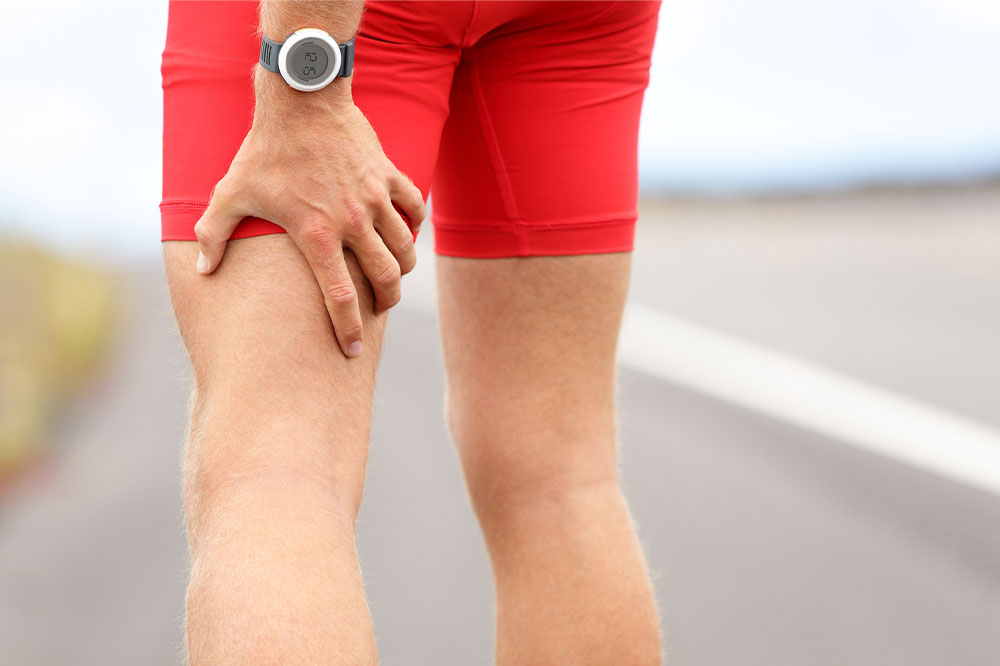
Hamstring injury – Symptoms, causes, and management
A hamstring injury affects the muscles at the back of the thigh, which are responsible for bending the knee. It is usually caused by a sudden jerky leg movement, whether during exercise or sleep, that stretches these muscles too far, leading to a tear or strain. While a hamstring injury causes immense pain and discomfort, it is curable. Scroll down to learn about the condition’s common causes, symptoms, and remedies.
Symptoms
The symptoms greatly depend on the intensity of the injury and the age and general physique of the person. Some common indicators of a hamstring injury include the following:
Sudden and sharp shooting pain
The most common symptom of a hamstring injury is sudden and severe pain in the back of the thigh.
Swelling and bruising
The affected area may become swollen and bruised as a result of the body’s inflammatory response to the injury.
Difficulty moving the leg
A hamstring injury can make it difficult to move the affected leg. Consequently, performing everyday activities like walking, climbing stairs, and sitting down can get challenging.
Pain and tenderness
The affected area may be painful to the touch, and one may also feel a throbbing sensation in the back of the thigh.
Stiffness
The injured muscle may feel stiff, particularly in the morning or after sitting for long periods.
Visible gap or indentation
In the case of a severe hamstring tear, there may be a visible gap or indentation in the muscle, which can be seen or felt.
Causes
Several factors can trigger a hamstring injury. Some common causes are:
Sports
Sports that require running and quick movements can put a lot of strain on the hamstring muscles and increase the risk of injury.
Overuse
Repeatedly using the hamstring muscles without adequate rest or recovery can lead to fatigue, increasing the risk of a strain.
Poor conditioning
Inadequate warm-up or conditioning before physical activity can make the muscles more vulnerable to damage.
Muscle imbalances
Imbalances in the strength or flexibility of the leg muscles can put extra strain on the hamstrings, increasing the risk of injury.
Age
As one ages, the muscles and tendons in the body become less flexible and more prone to injury.
Previous injury
A previous hamstring injury can weaken the muscle and increase the risk of another episode.
Poor technique
Using improper technique when performing physical activity can strain the hamstrings and increase the risk of injury.
Treatment and management
The treatment can vary depending on whether a person is experiencing acute and sharp shooting pain or struggling with a chronic hamstring injury. A health expert may recommend a combination of the following to manage the problem:
Rest
Rest is essential for allowing the injured muscle to heal. One should avoid activities that aggravate the injury, such as running or jumping, and any action that exerts pressure on the affected leg.
Ice
Experts recommend applying ice to the injured area for 20 minutes, several times a day, to help reduce pain and swelling.
Compression
Compression can help reduce swelling and support the injured muscle. One can wrap the affected area with an elastic bandage or compression sleeve.
Elevation
Elevating the injured leg can help reduce swelling by improving blood circulation to the region. Individuals can rest the affected leg on a pillow or another soft surface.
Physical therapy
Once the initial pain and swelling subside, physical therapy exercises can help restore the injured muscle’s strength, flexibility, and range of motion. A physical therapist can create a customized recovery plan based on the severity of the injury.
Surgery
In rare cases, surgery may be necessary to repair a severe hamstring tear or avulsion injury, where the muscle is torn away from the bone.
Recovery
The speed of recovery from a hamstring injury depends on how well the patient follows the doctor’s instructions. Mild strains may take a few days to a week to heal, while more severe injuries may take several weeks or even months to fully recover. Patients should follow the treatment plan thoroughly and gradually increase their activity levels to prevent re-injury. Returning to normal activities or sports too soon can lead to re-injury and further damage to the muscle. If the injury is too severe, one may require crutches for walking.
If someone experiences the classic symptoms of a hamstring injury, such as sharp pain in the leg, numbness in the morning, or a swollen area, they must consult a doctor at the earliest. This will improve the prognosis, and the injury may easily be treated using non-invasive methods.




